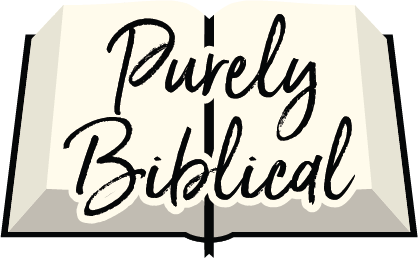REVELATION 17:4 – BABYLON’S JUDGMENT WHEN HER CUP WAS FULL
“The woman was arrayed in purple and scarlet…having in her hand a cup full of abominations and the filthiness of her fornication.”
In chapter 6:9-11; 14:8-20; 17:4-6, 18:5, Babylon would be judged because she had filled the measure of her sin by persecuting the saints. In Isaiah 65:6-15, the prophet foretold the time when Israel would fill the measure of her sin and be destroyed. That destruction would be followed by the creation of the new heavens and earth (v. 17f). When standing in the temple (Matthew 23) Jesus spoke these words to the Jews in light of their past rejection of the prophets and impending rejection of His “prophets, wise men and scribes”, “Fill up then the measure of your fathers guilt”(v. 32). Jesus said Jerusalem had not yet filled up the measure of her sin but would do so in His generation (vs. 34-36). Jesus’ prediction is a continuance of Isaiah’s prediction that Israel would fill the measure of her sin and ultimately perish.
The apostle Paul, (1 Thessalonians 2:14-16) said the Jews had killed the prophets, crucified Jesus, and were persecuting him. In doing so, he said “they fill up the measure of their sin always.” This was written about AD 50-51. The process of filling up the measure of sin was not completed some 17 years after the Cross. But that 17 years was full of persecution by the Jews (cf. Acts 8, 17, 18). Think again of our argument about the length of Roman persecution, and contrast it with the longstanding Jewish persecution.
From Isaiah to Jesus, to Paul, and to John, there is an unbroken thread about the filling up of the measure of sin, and the thread is all of one color. It deals with Israel. The unbroken testimony of the Lord and the epistles is that it was the Jews that were filling the measure of their sin.
Filling the cup of sin is synchronous with filling the cup of suffering (Rev. 6:9-11). The martyrs were told to rest for “a little while” during which the ordained number of brethren had to suffer.
In 1 Peter 1, the apostle told the brethren in Asia that they had to suffer a “little while” before judgment came (1 Pet. 1:5-7). Peter wrote from “Babylon” (1 Pet. 5:13). Many commentators believe Peter was in Rome when he wrote this, therefore we are supposed to interpret Revelation in light of Peter’s reference. However, Chilton states, “Based on data from the New Testament itself, our natural assumption should be that Babylon was Jerusalem, since that was where he lived and exercised his ministry (Acts 8:1; 12:3; Gal. 1:18, 2: 1-9; cf. 1 Pet. 4:17). Moreover, Peter’s first epistle also sends greetings from Mark and Silas 1 Peter 5:12-13, both of whom lived in Jerusalem (Acts 12:12; 15:22, 27).”(Vengeance, 362f). See Russell’s extended discussion of this issue also (Parousia, 346f).
Peter wrote to the Asian churches from Babylon predicting more martyrdom. In Revelation, John writes about Babylon to the Seven Churches of Asia, predicting more martyrdom. He predicted her imminent demise after she had filled the cup of her sin by persecuting the saints. Both books speak of present and imminent suffering. Both speak of filling the measure of suffering/sin. Both speak of Babylon. Both speak of the imminent coming of the Lord for the rescue from suffering. Can such parallelism be accidental? Should we seek to find two Babylons, guilty of persecuting the saints, and doomed to imminent judgment?
Peter wrote in approximately AD 64. The two apostles are obviously writing about the identical issues, and the sense of urgency and imminence of fulfillment permeates both books. The only catastrophic Day of the Lord that in any way harmonizes with the themes set forth in both books, and that falls within the temporal limitations is the fall of Jerusalem as Babylon.
See also related “Topic Studies & Terms”:
“That Great City (of Revelation) (The Great City) (Jerusalem)”
For a more in-depth study see the related full “Study Series”:
